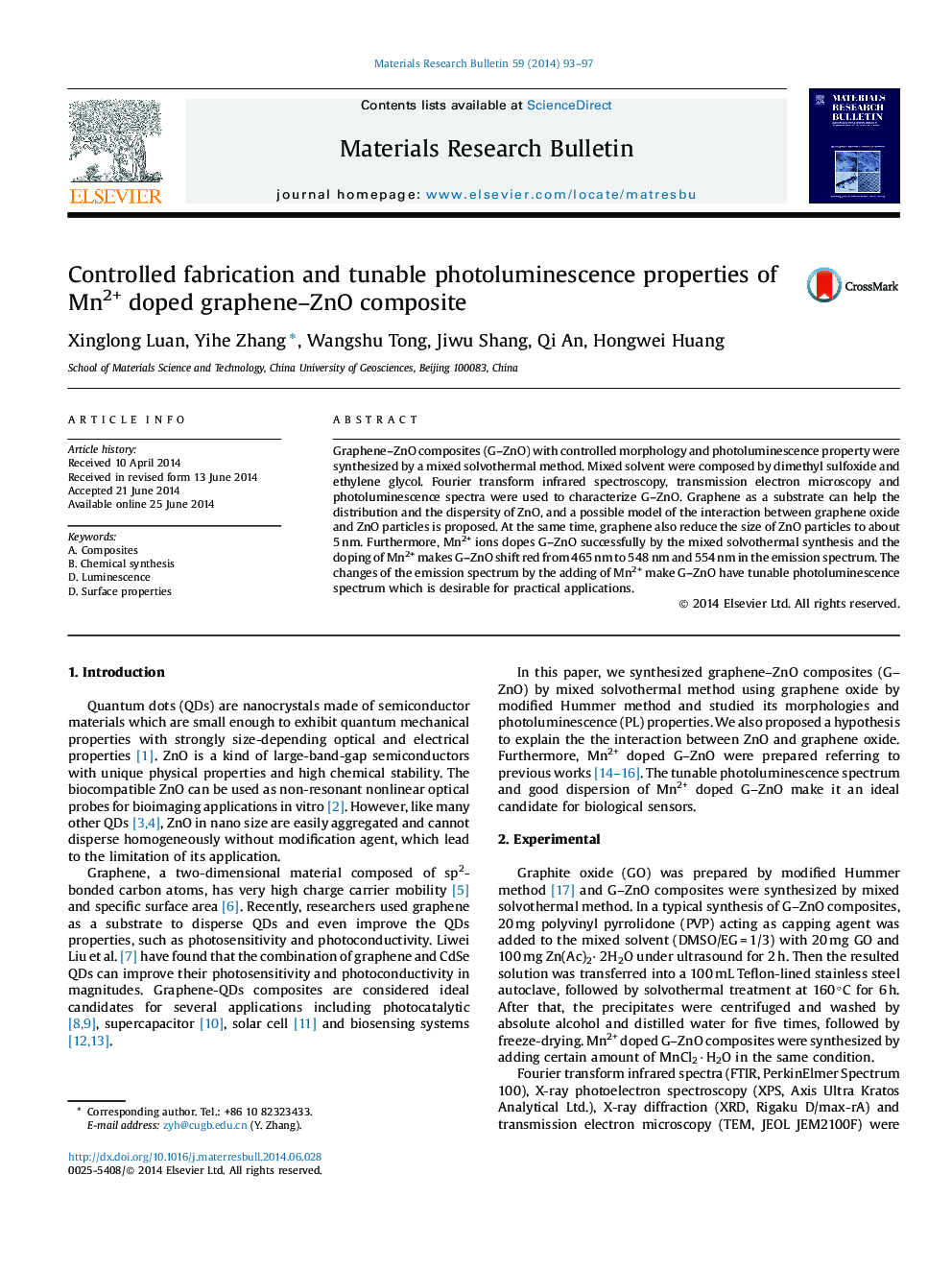| Article ID | Journal | Published Year | Pages | File Type |
|---|---|---|---|---|
| 1488006 | Materials Research Bulletin | 2014 | 5 Pages |
•Graphene–ZnO composites were synthesized by a mixed solvothermal method.•ZnO quantum dots are distributed uniformly on the graphene sheets.•A possible hypothesis is raised for the influence of graphene oxide on the nucleation of ZnO.•Mn2+ doped graphene–ZnO composites were fabricated and the emission spectra can be tuned by doping.
Graphene–ZnO composites (G–ZnO) with controlled morphology and photoluminescence property were synthesized by a mixed solvothermal method. Mixed solvent were composed by dimethyl sulfoxide and ethylene glycol. Fourier transform infrared spectroscopy, transmission electron microscopy and photoluminescence spectra were used to characterize G–ZnO. Graphene as a substrate can help the distribution and the dispersity of ZnO, and a possible model of the interaction between graphene oxide and ZnO particles is proposed. At the same time, graphene also reduce the size of ZnO particles to about 5 nm. Furthermore, Mn2+ ions dopes G–ZnO successfully by the mixed solvothermal synthesis and the doping of Mn2+ makes G–ZnO shift red from 465 nm to 548 nm and 554 nm in the emission spectrum. The changes of the emission spectrum by the adding of Mn2+ make G–ZnO have tunable photoluminescence spectrum which is desirable for practical applications.
Graphical abstractFigure optionsDownload full-size imageDownload as PowerPoint slide
